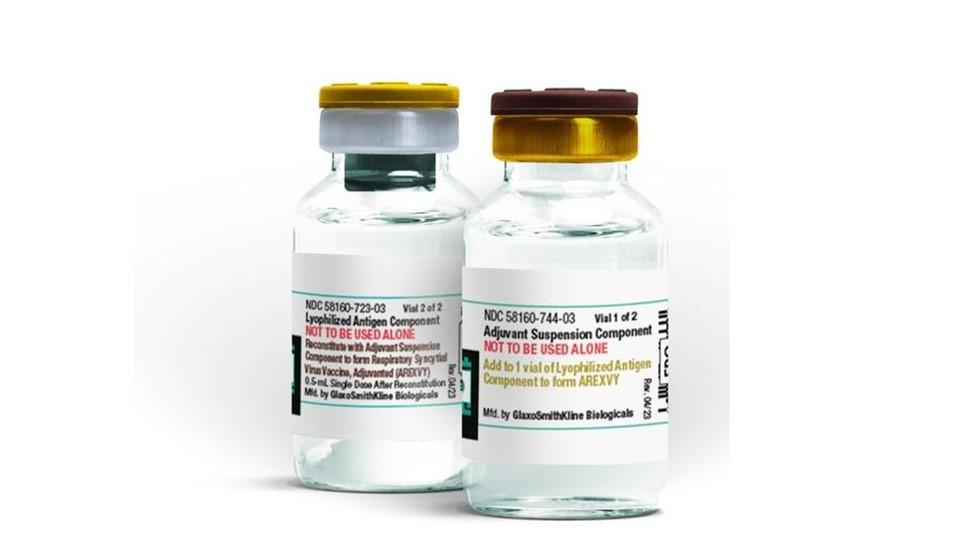ASCO analysis: market access challenges in Europe for PD-1/PD-L1 targeted therapies in oncology

Christine Henry and Richard Wagner of Kantar Health offer their opinions of the market access landscape for oncology in Europe following the recent 2013 ASCO annual meeting.
Therapies that target the immune checkpoint system show enormous potential to change the way cancer is treated, with the promise of a durable response in an increasing percentage of patients. For patients and physicians this presents a great opportunity. However, payers and regulators will need to deal with the budget and cost-effectiveness implications of these new drugs. The immuno-oncologics show strong, durable responses in some patients – but the benefiting group is currently unselected. The dosing schedule for some products in clinical trials is until progression, meaning that the cost for responders could cover years of treatment. These drugs show activity in multiple tumour types, so they could be used in a large patient population, and data presented at the 2013 American Society of Clinical Oncology (ASCO) annual meeting also showed that they may be effective in combinations, requiring payers to cover two high-priced branded therapies.
Overall a large amount of uncertainty surrounds the use of immuno-oncologics, and hence around their budget impact. How will increasingly cash-strapped and value-conscious European payers respond to this budget challenge in the future?
PD-1 and PD-L1 inhibitors show promise in advanced melanoma
The 2013 ASCO annual meeting (May 31-June 4 2013) saw much excitement around the promise of immuno-oncologics for cancer. These drugs target the immune checkpoint system to "release the brakes" on the immune system and enable T-cell targeting of cancer cells. An early example of this approach was Bristol-Myers Squibb's CTLA-4 inhibitor Yervoy® (ipilimumab), currently approved for melanoma. Early data were presented at ASCO for PD-1 antibodies from Bristol-Myers Squibb (nivolumab)1 and Merck & Co. (lambrolizumab)2, as well as an alternative PD-L1 inhibitor targeting a receptor for the PD-1 ligand, Roche's MPDL3280A3. Results from a trial of nivolumab in combination with Yervoy showed that the targeting of two different immune checkpoint pathways could be even more effective than the individual agents4 – and raised the possibility of further combinations in the future.
Market access for novel, high-priced therapies in Europe
The EU5 markets will be watched closely to see how payers will deal with the potential budget impact of immunotherapy products – particularly in the context of continuing austerity measures and budget constraints in much of Europe. Yervoy was approved by the European Medicines Agency (EMA) in July 2011. It was launched in Europe at the same price as in the U.S., around $120,000 per course of therapy (€85,000/£75,000).
"These drugs show activity in multiple tumour types, so they could be used in a large patient population..."
A variety of cost-limiting strategies have been used in European markets in response to novel, high-priced treatments such as Yervoy, and we consider that these previous examples show how payers may approach the new immunotherapy products. Budget-capping, cost-capping at a patient level, discounting, limits to specialist centres, payment-by-results, limits on access beyond the EMA label, and attempts to define the treatment regimen of maximum benefit could all be considered. Examples of each option are taken from across the five major EU markets; however, note that these options are widespread in Europe, and all markets will use some of these tactics at different times.
Limiting budget impact by budget capping, patient cost caps and discounting
If one of the greatest fears for European payers is the high budget impact of increasing numbers of responding patients being treated with immunotherapy drugs for indefinite times, then one approach to limit this is via budget capping. This restriction formed a part of the Italian reimbursement plan for Yervoy, with overall national spend limited to €30 million in the first year and €50 million in the second year, with the potential for later review. There is also the chance of confidential budget limits in the French system (although it is not known whether this is the case for Yervoy), while in the UK and Germany pricing is accepted based on an evaluation of likely patient population and drug use per patient – with the possibility of revision in future years if budget is found to exceed modelling.
An alternative to budget-capping at a system level is limiting the maximum payout per patient. This could be a particularly attractive option for the new immuno-oncologics, with their potential for indefinite dosing or, alternatively, re-treatment or "boosters." An example of this approach is the Italian cost-sharing scheme for Avastin, which requires free supply for responders beyond a certain number of cycles, as well as 100% payback from the manufacturer for any treatment beyond a threshold of 11,000 mg per patient per year of treatment.
Discounting is a complementary method to limit budget impact. In Germany, the launch price of Yervoy has been discounted through negotiations with the Sickness Fund Association (GKV) by a total of 22.35%: 16% via a mandatory rebate, and an additional 6.35% for the individual drug based on negotiations around the benefit assessment.
Payment-by-results schemes: defining the benefiting patient population
European regulators and payers may limit reimbursement to those patients who receive benefit from a drug – or, at least, to those who are not adversely affected. The 2013 access decision for Yervoy in melanoma from the Italian Medicines Agency (AIFA) gives an example of how such payment-by-results schemes could work for the new immunotherapeutics.
"An alternative to budget-capping at a system level is limiting the maximum payout per patient."
In the case of Yervoy, the manufacturer must repay 100% of treatment costs for patients who do not receive the third and fourth doses due to a serious adverse event (AE) or death. Patient dosing should be easier to record and check than in the traditional method of basing payment on tumour progression, and the budget saving could be substantial, especially where a significant proportion of patients stop treatment because of serious AEs. The downside from a payer perspective is that there will still be payment for non-responders: in the case of Yervoy, for those who were treated through three or four cycles, but in whom the therapy had no effect.
Cost management using specialist centres
Payers from the EU5 markets have reported that some newer cancer therapies can only be prescribed at a limited number of specialist centres. This allows for safe use of treatments that may be complex to use and have associated toxicity risk, as well as decreasing the likelihood of inappropriate or off-label use. In addition, the extra administrative burden on patients and on physicians, who must first identify the appropriate centre to send their patients, will likely act as a barrier to use. The net effect, then, is to limit the use of new therapies while making cost management easier for payers because the data can be more easily monitored.
In the case of the immuno-oncologics, which can have serious immune-related toxicities and require patient monitoring, use of specialist centres could be a viable option.
Limits beyond the EMA label: defining the target patient population
In order to gain the greatest value for the lowest cost, European assessment agencies have shown strong interest in limiting reimbursement of new products beyond the EMA-imposed label to certain treatment lines or on the basis of biomarkers – either for a product itself or because of competitor labelling.
As an example of the latter, ,coverage of Yervoy in France was restricted to BRAF600 wild-type patients based on the indication of competitor Zelboraf® (vemurafenib, Roche) in BRAF600E mutants: that is, the biomarker-defined population of another later product led to access restrictions. This could also occur for the PD-1 and PD-L1 immunotherapies in melanoma; similarly, a broad label in lung cancer could be limited to patients not suitable for ALK inhibitor therapies like Xalkori® (crizotinib, Pfizer).
"Alternatively, regulators could limit market access to a patient group that shows higher responsiveness or benefit to a particular therapy, even if it has some broader effect."
Alternatively, regulators could limit market access to a patient group that shows higher responsiveness or benefit to a particular therapy, even if it has some broader effect. In the UK, the National Institute for Health and Care Excellence (NICE) took this approach to the reimbursement of Herceptin® (trastuzumab, Roche) in gastric cancer. Although effectiveness was shown in patients with a range of levels of HER2 staining, NICE limited reimbursement to only the higher degree of staining, where greater effects were seen. This is particularly relevant for the novel immunotherapies, as the presentations at ASCO revealed that PD-L1 activity correlates with response but does not predict it. For instance, in the case of the anti-PD-L1 MPDL3280A (Roche), some patients with tumours that were negative for PD-L1 staining also had strong responses, albeit in lower numbers5. While these therapies may receive a general label indication from the EMA, this could later be narrowed by individual payers or regulators.
Choosing the right dosing regimen: payers will look for cost effectiveness
Yervoy is dosed across only four cycles and as such presents a reasonably well-defined budget impact. In contrast, some of the newer therapies – such as Bristol-Myers Squibb's nivolumab – can be dosed continuously until progression. However, data presented at ASCO showed that some patients had sustained responses even when they had stopped treatment for reasons other than AEs6. This sort of outcome will have payers querying whether there is a minimum dosing time that is effective, or whether it will be possible to have intermittent dosing, or re-initiation on progression, in order to lower the overall patient treatment cost.
We can see an example of this interest in the multiple trials by national sponsors to test a shorter duration of Herceptin as adjuvant therapy in the HER2+ breast cancer setting rather than the labelled 12 months. Although these trials have so far failed to show clear non-inferiority or change treatment practice, this indicates that authorities may be willing to investigate treatment reduction of their own accord if the forecast savings make it worthwhile.
"The new generation of immunotherapies generated excitement among the physicians at ASCO 2013."
The possibility of ongoing dosing in long responders to therapy will also affect the value proposition for these drugs and the cost-effectiveness calculations in markets like the UK, where it could potentially affect NICE reimbursement recommendations.
Conclusions: immunotherapies will face a tough market access environment in Europe
The new generation of immunotherapies generated excitement among the physicians at ASCO 2013. They will be a welcome addition to the melanoma armamentarium, and they have the potential to gain substantial market share in melanoma and in other tumours. However, European payers and regulators will seek to constrain and define budget impact in the face of uncertainty. Manufacturers should expect multiple pricing and reimbursement obstacles, including payment clawbacks beyond a defined budget or patient dosage or for lack of response or tolerability; reimbursement limitations by patient subgroups or by prescribing institution; and discounting. In addition, dosing regimens will be closely inspected and challenged, both pre- and post-authorization, in a bid to define value and escape the possibility of paying for chronic dosing of these expensive therapies – alone or in combination – in an increasing group of responder patients. Kantar Health expects that manufacturers of the immuno-oncologics will face a tough market access environment as European payers look to balance adequate reimbursement for effective new treatments, with their impact on limited health system resources.
References
1. Sznol et al., 2013. Survival and long-term follow-up of safety and response in patients (pts) with advanced melanoma (MEL) in a phase I trial of nivolumab (anti-PD-1; BMS-936558; ONO-4538). Abstract CRA9006, ASCO 2013.
2. Ribas et al., 2013. Clinical efficacy and safety of lambrolizumab (MK-3475, Anti-PD-1 monoclonal antibody) in patients with advanced melanoma. Abstract 9009, ASCO 2013
3. Hamid et al., 2013. Clinical activity, safety, and biomarkers of MPDL3280A, an engineered PD-L1 antibody in patients with locally advanced or metastatic melanoma (mM). Abstract 9010, ASCO 2013.
4. Wolchok et al., 2013. Safety and clinical activity of nivolumab (anti-PD-1, BMS-936558, ONO-4538) in combination with ipilimumab in patients (pts) with advanced melanoma (MEL). Abstract 9012, ASCO 2013.
5. Hamid et al., 2013. Clinical activity, safety, and biomarkers of MPDL3280A, an engineered PD-L1 antibody in patients with locally advanced or metastatic melanoma (mM). Abstract 9010, ASCO 2013.
6. Sznol et al., 2013. Survival and long-term follow-up of safety and response in patients (pts) with advanced melanoma (MEL) in a phase I trial of nivolumab (anti-PD-1; BMS-936558; ONO-4538). Abstract CRA9006, ASCO 2013.
About the authors:
Christine Henry, Ph.D. is an Associate Consultant in the Commercial Planning group. Dr. Henry is part of the Commercial Strategies team supporting the Oncology Market Access Europe syndicated offering and custom work. Dr Henry holds a Ph.D. in Physical Chemistry from the Australian National University, as well as an LLB (Hons 1st Class) and BSc (Hons 1st Class, University Medal) also from the ANU.
Richard Wagner, Ph.D. is Vice President in the Commercial Planning group. Dr. Wagner brings broad U.S. and international experience and knowledge in the pharmaceutical and biotechnology markets, complemented by an in-depth clinical and technical subject-matter expertise in oncology. Dr. Wagner has spent the last decade solely focused on understanding the Treatment Practice and Evolution of more than 30 tumor types across US, EU, and Japan. His in-depth knowledge of clinical decisions impacting the commercial success of oncology drugs in development is widely recognized. Dr. Wagner has authored a number of reports on the clinical development of leading pipeline drugs. Dr. Wagner has a Ph.D. in Biophysics from the University of California at San Francisco and a B.S. in Applied Physics from Xavier University in Cincinnati, Ohio.
What potential do the new generation of immunotherapies hold for oncology?












